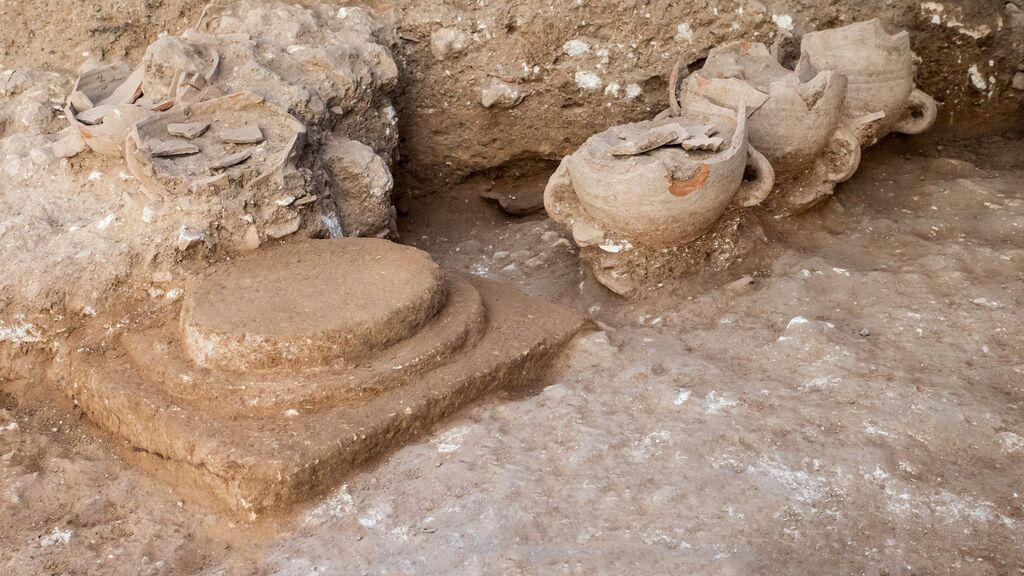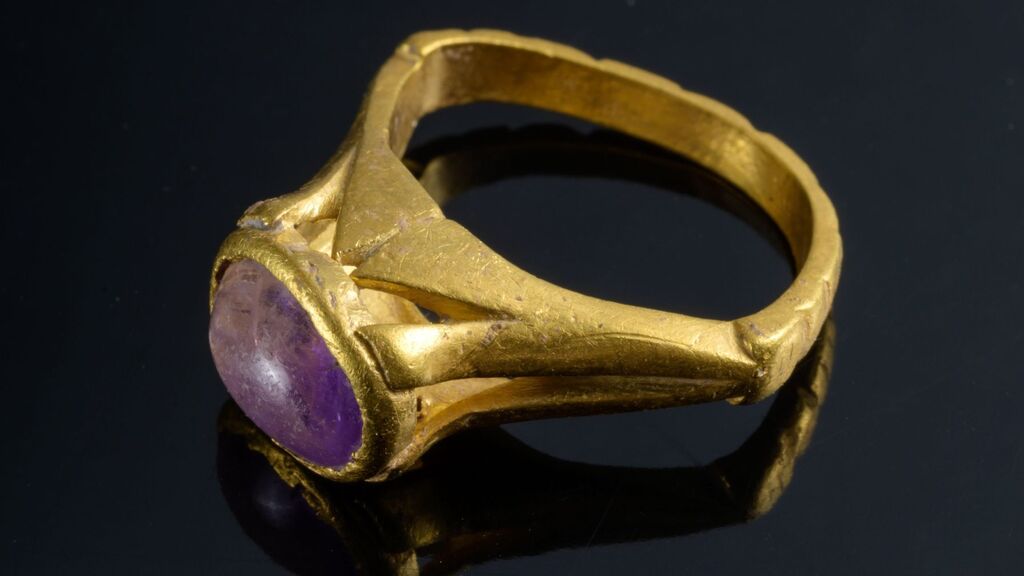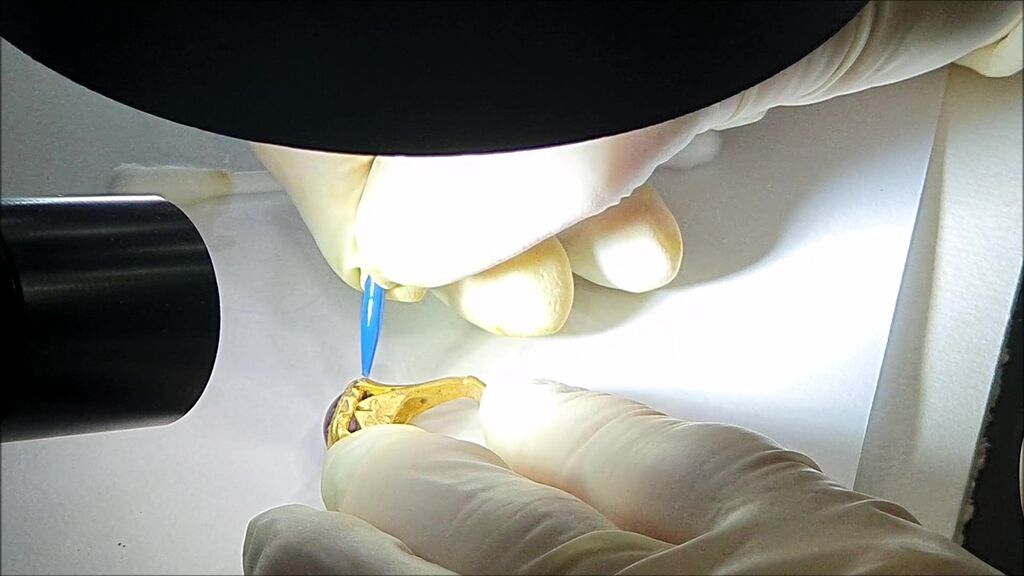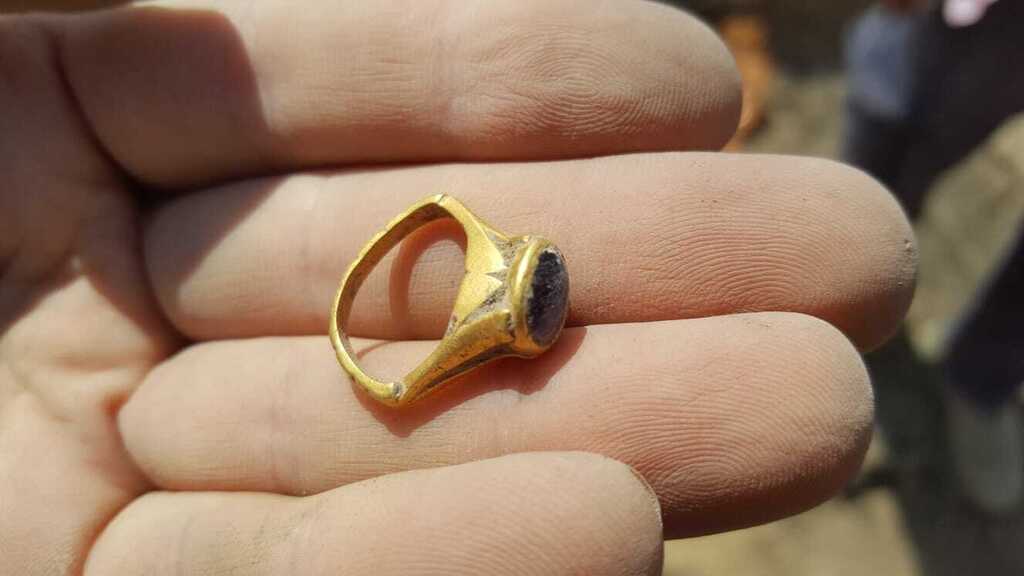A gold ring dating back to the late Byzantine period, was uncovered by archeologists in a dig of the coastal town of Yavne in the south of Israel, authorities said Tuesday.
The excavation of the coastal city of Yavne is carried out by the Israel Antiquities Authority (IAA) in advance of construction planned in the area.
Dr. Yotam Asher at the IAA’s analytical laboratory who examined the ring said its stone is mostly made of silica, a material from which many gemstones are composed. This examination ruled out the possibility that the purple inlay is made of glass. The ring weighs 5.11 grams.
Dr. Amir Golani, an expert on ancient jewelry at the IAA, said the person who owned the ring "was affluent, and the wearing of the jewel indicated their status and wealth. Such rings could be worn by both men and women.”
Golani identified the semi-precious stone as an amethyst. Amethyst is mentioned in Bible as one of the 12 precious stones worn by the high priest at the Jewish temple in Jerusalem on his ceremonial breastplate.
“Many virtues have been attached to this gem, including the prevention of the side-effect of drinking - the hangover,” he added.
The jewel was found near another recent discovery of a massive wine-making complex, uncovered at the site, leading to the possibility that it may have belonged to the complex owner.
4 View gallery


Wine jugs found in massive winemaking complex uncovered in Yavne archeological dig
(Photo: IAA)
“Did the person who wore the ring want to avoid intoxication due to drinking a lot of wine? We probably will never know,” said Dr. Elie Haddad, the director of the excavation on behalf of the IAA.
Researchers are debating the date of the ring. It was found in a fill dated to the end of the Byzantine period and the beginning of the Early Islamic period, the 7th century CE, but it is possible that the ring, due to its beauty and prestige, was transmitted from generation to generation over the centuries.
Gold rings inlaid with amethyst stone are known in the Roman world, and it is possible that the ring’s find belongs to the elites who lived in the city as early as the 3rd century CE.
IAA General Manager Eli Escosido said of the discovery of the ring that it ignites people's imagination.
"The findings of day-to-day artifacts tell us the stories of humans of the time and connect us to the past. It is exciting to imagine the person who owned the ring walking around the streets of ancient Yavne, so different that it is today."




